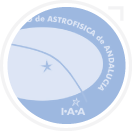A solar escalator on Mars: Self-lifting of dust layers by radiative heating, Geophysical Research Letters
Dust layers detected in the atmosphere of Mars by the light detection and ranging (LIDAR) instrument on the Phoenix Mars mission are explained using an atmospheric general circulation model. The layers were traced back to observed dust storm activity near the edge of the north polar ice cap where simulated surface winds exceeded the threshold for dust lifting by saltation. Heating of the atmospheric dust by solar radiation caused buoyant instability and mixing across the top of the planetary boundary layer (PBL). Differential advection by wind shear created detached dust layers above the PBL that ascended due to radiative heating and arrived at the Phoenix site at heights corresponding to the LIDAR observations. The self-lifting of the dust layers is similar to the "solar escalator" mechanism for aerosol layers in the Earth's stratosphere.































